| |
|
|
| |
|
jan torpus
|
| |
|
contact
/ CV + work list / PUBLICATIONS |
| |
|
|
|
|
| |
|
projects > Media art / art and design research |
|
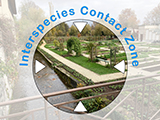 |
|
“MITWELTEN. Media Ecological Infrastructures for Biodiversity.”, Design research project, Basel 2020-24.
Investigation and promotion of biodiversity in settlement and recreation areas, based on interdisciplinary design research and media ecology studies. The central premise is the abolition of the dichotomy of nature and culture and the transgression of the anthropocentric perspective. The technologically extended 'response-able environment' aims to give a voice to plants and animals, to expand ecological knowledge and to design new forms of interspecies coexistence. |
|
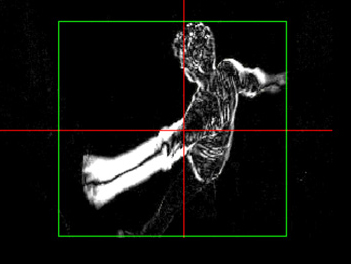 |
|
“Technology - Human - Design: Paradigms of Ubiquitous Computing”, artistic research project, Basel 2019-22.
UbiComp technologies have an impact on our everyday lives through strategies of intelligent, networked omnipresence, invisibility and seamless immediacy. Such paradigms are derived from theoretical groundwork, artistically staged and evaluated in an interactive research setting, using sensor data and qualitative ethnographic survey methods. The project contributes to a better understanding and critical assessment of ubiComp and its influence on our living environment, agency and privacy.
Subsidized by the Swiss National Science Foundation (SNF).
|
|
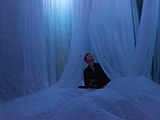 |
|
“Designed immediacy. Atmospheric experience in an affective-responsive environment”, artistic research project, Basel 2015-17.
Exploration of the atmospheric potential and the affective connection between humans and their instrumented, responsive environments and development of corresponding artistic design strategies, user-evaluating ubicomp environments from a critical perspective, beyond pure application and usefulness. Participants experience affection and go through pattern recognition and appropriation processes.
Subsidized by the Swiss National Science Foundation (SNF).
|
|
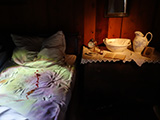 |
|
“Ubiquitous Computing for knowledge transfer, exhibition design and museum operations”, applied design research project, Basel 2015-17.
The project explores how exhibits and exhibition spaces can be augmented by interactive media to inform and emotionally involve visitors without the need of supplemental interface devices with additional information layers. From the perspectives of scenography, museology and engineering the potential of ubiComp for exhibition design, knowledge transfer and museum operations is considered and elaborated into a respective design toolkit. Subsidized by the Commission for Technology and Innovation (CTI).
|
|
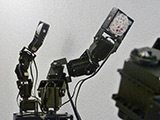 |
|
“affective environments”, interactive Art installation, Basel 2014/5.
Exhibition visitors get intimately involved with three installations by connecting their breathing, heart-rate and skin conductance. The measured psychophysiological data alter parametric values of a VR-world, a video narrative and a group of robotic creatures which creates new affective stimuli, establishing a human-in-the-loop feedback system.
Subsidized by cultural funds. |
|
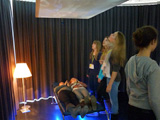 |
|
“Mediating the Future in Exhibitions”, design research project, Basel 2012.
The team developed, dramaturgically staged and evaluated a tangible info space with a ubiquitous computing approach for a museum. Academy of Art and Design IDK HGK FHNW in collaboration with the Museum of Communication Bern, iart-interactive AG and Element Design GmbH. Subsidized by the Commission for Technology and Innovation (CTI). |
|
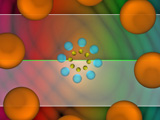 |
|
“The Use of Biofeedback For a Human-Centred Approach to Improving Cardiovascular Magnetic Resonance Imaging", interdisciplinary resarch project, Basel 2011.
The team developed audio-visual interactive biofeedback interfaces for applications in hospitals. Academy of Art and Design IDK HGK FHNW in collaboration with the University Hospital Basel, Radiological Physics. Subsidized by the Swiss National Science Foundation (SNSF). |
|
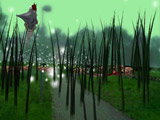 |
|
lifeClipper3, game-like immersive outdoor augmented reality art project, Basel 2009-2010.
The implementation of parallel worlds, which form reference layers with alternative logic and dynamics, question visitors' perceptions and offer them an opportunity to experience other dimensions. The game-world is mainly built on the combination of three types of systems: a location-sensitive system, an iterative climate circle and an emergent AI ecosystem. Subsidized by local cultural funds and supported by the IDK HGK FHNW. |
|
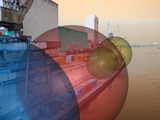 |
|
lifeClipper2, design research project, Basel 2006-2008.
lifeClipper2 is the continuation of the art project lifeClipper in the applied design research context. The development of a design vocabulary and the necessary technical equipment for applications in the fields of tourism, game and architecture visualization are the main goals of this project. Academy of Art and Design IDK HGK FHNW. Subsidized by the Commission for Technology and Innovation (CTI). |
|
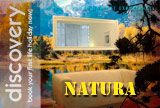 |
|
AR-Habitats, additional part of the design research project "living-room2", Basel 2008.
AR-habitats offers a selection of habitats – game-like immersive AR-applications optimized for daily home use. Habitats can be educational, entertaining, therapeutic, travel related and many more options. The project AR-Habitats simulates a possible future market for commercial AR applications. Academy of Art and Design IDK HGK FHNW. |
|
 |
|
living-room2, design research project, Basel 2005-2007.
The project is based on the precedent project living-room1 (see blow). The new installation works on an improved tracking and authoring system which allows the implementation and study of more complex interactive scenarios and a more specific exploration of design and content related issues. Academy of Art and Design IDK HGK FHNW. Subsidized by the Swiss National Science Foundation (SNSF). |
|
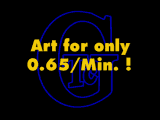 |
|
TelcomGallery, interactive art installation, Basel 2005.
TelcomGallery is an ironic proposal for selling art with commercial telecommunication strategies. Publically staged video scenes can be activated by mobile phone dialing a chargeable number. The mobile phone is used as a remote control and headset for the sound. The exhibited scenes are static and remind of famous paintings. Audio signals sent by the spectator have effect on theexhibited scenes. Return calls and spam messages prompt the visitor later. Subsidized by local cultural funds. |
|
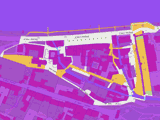 |
|
lifeClipper,
immersive outdoor augmented reality art project, Basel 2004.
Visitors are invited to walk with a wearable computer system in a virtually extended historic quarter of Basel. Their position and viewing direction is measured and captured
image and sound are augmented according to defined presets. Through artistic interventions the experience of reality
becomes seriously questioned. Subsidized by local cultural funds. |
|
 |
|
living-room1, design research project, Basel 2003.
Different aspects of augmented reality get examined
in a clearly defined studio situation from a design and room perception
point of view. The choreography is dependent on user interactions in the
real world (position and direction) and focuses on the borderline between
real and virtual worlds. Academy of Art and Design IDK HGK FHNW . Subsidized by the Swiss National Science Foundation (SNSF). |
|
 |
|
affectiveCinema2, interactive video art installation, Basel 2002.
The order and parameters of image and sound shown on a video are influenced
according to the visitor’s measured emotional response to displayed
video clips. The visitors see more important video scenes the stronger they react and therefore understand
more of a secret system, where abstract characters and objects tell a story
of social dependencies and connections. Subsidized by local cultural funds. |
|
 |
|
affectiveCinema1,
interactive video art installation, Basel 2001.
The project examines human affect caused by a video source. Biofeedback sensors measure the arousal of the visitor sitting in front of a display and the received signal influences parameters of image and sound as well as the navigation path through a non-linear non-verbal conversation with a virtual character. Subsidized by local cultural funds. |
|
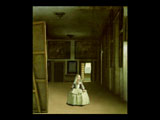 |
|
Las meninas, artistic CD-ROM, Basel 1999.
Artistic interactive interpretation of the painting of Velazquez. Audio-visual art studies, diploma project HGK. |
|
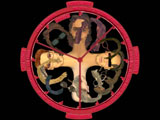 |
|
Gender Media Art (GMA), artistic CD-ROM, Amsterdam 1998.
The team developed an artistic interactive presentation of gender theories and exhibitions of AXIS, Bureau voor de Kunsten, Amsterdam. |
|

















